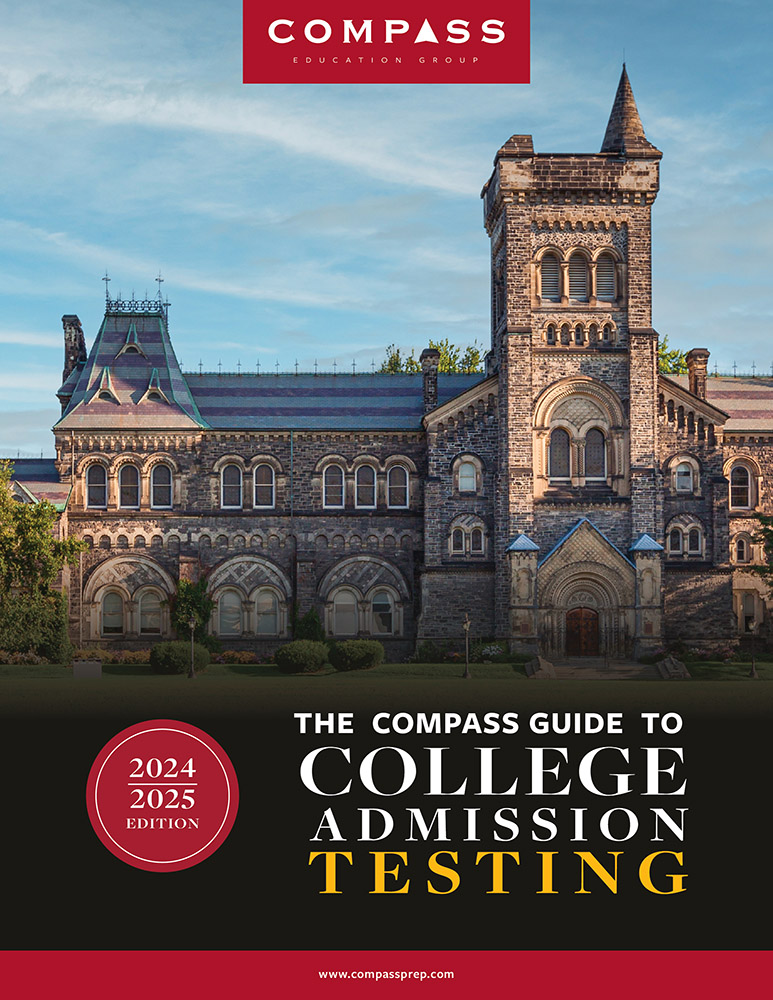 The National Association for College Admission Counseling (NACAC) released its 2014 State of College Admission report this past May. The annual report is informed by national survey data from college admission officers and metrics gathered by the U.S. Department of Education.
The National Association for College Admission Counseling (NACAC) released its 2014 State of College Admission report this past May. The annual report is informed by national survey data from college admission officers and metrics gathered by the U.S. Department of Education.
The report focuses on a number of issues relevant to Compass families such as 1) historic trends in applications to college, 2) popular admission strategies for students (e.g. Early Decision, Early Action, and Wait Lists), and 3) the most heavily-weighted components of the college application.
In an effort to synthesize the report into something more digestible, we have created a categorized list of takeaways and notable statistics:
Applications to College
TAKEAWAY: Applications to college continue to steeply rise, with the majority of students submitting 3 or more applications. A third of college applicants are submitting 7 or more applications. With such a high volume of applications, It is much more difficult for admission officers to predict which applicants will enroll after being admitted.
CLOSER LOOK:
- In 2013, 81% of students submitted 3 or more applications, while 32% of students submitted seven or more applications.
- Although it is commonly assumed that college admission, generally, is more competitive than ever before, four-year colleges offered admission to 64.7% of students on average.
- On average, the number of admitted applicants who later matriculated at a specific college – the institution’s yield rate – was 35.9% in 2013. Yield rates have steadily declined at four-year colleges since 2002.
Admission Strategies: Early Decision, Early Action, and Wait Lists
TAKEAWAY: The number of Early Decision (ED) and Early Action (EA)* applicants have increased at most colleges. Broadly speaking, applicants who apply ED or EA are admitted in greater numbers than traditional freshman applicants.
CLOSER LOOK:
- 49% of colleges noted increased numbers of ED applicants; 78% noted increased numbers of EA applicants and 68% noted an increase in students admitted via EA.
- The number of colleges using wait lists has not increased in 2013, however the percentage of students admitted via wait lists has slightly increased from 25% in 2012 to almost a third of applicants (30%).
*Note: ED is defined as the application process in which students make a commitment to a first-choice institution where, if admitted, they definitely will enroll. EA is the application process in which students apply to a preferred college and receive a decision in advance of the institution’s regular response date. ED is known as a restrictive application plan, because students may only apply to a single school ED but may submit traditional applications to other colleges.
Factors in the Admission Decision
TAKEAWAY: For the past 20 years, the 3 most important factors in the college application have remained the same: 1) grades in college preparatory courses, 2) strength of curriculum at a student’s secondary school, and 3) standardized test scores (i.e. SAT/ACT). Generally, students are obtaining more course credits and completing more advanced courses than in years past. Since 2013, the ACT has become the most popular admission test nationwide.
CLOSER LOOK:
In 2013, admission officers ranked the following features of the application in order of importance:
- Grades in college prep courses
- Strength of curriculum
- Standardized admission test scores
- Overall high school GPA
- Essay
- Student’s demonstrated interest
- Counselor and teacher recommendations
- Extracurricular activities
- Class rank
- Studies by the US Department of Education have shown that although overall GPA serves as an indicator of a student’s academic performance in high school, strength of curriculum, especially grades in college prep courses (i.e. AP/IB), are better indicators of success in college.
- At selective schools – those that accept fewer than 50% of applicants – greater emphasis is placed on strength of curriculum, overall GPA, the essay, letters of recommendation, and AP/Subject Test scores.
- Since 2007, the number of ACT-takers nationwide has eclipsed SAT-takers – 1.84 million vs. 1.67 million in 2014.
- Contextual factors including race/ethnicity, first-generation status, alumni relations, and ability to pay were also evaluated in the 2014 report.
- Generally, highly selective colleges attributed greater importance to contextual factors than less selective colleges.
- Not surprisingly, private colleges attributed greater importance to alumni relations, ability to pay, and high school attended.
To review other features of the 2014 report not covered in this post – such as trends in transfer students, international education, and the activities of college admission offices – follow this link. To better understand the role of standardized testing in admission and to come up with a plan for effective test preparation please schedule a complimentary consultation with a Compass director.


2 Comments